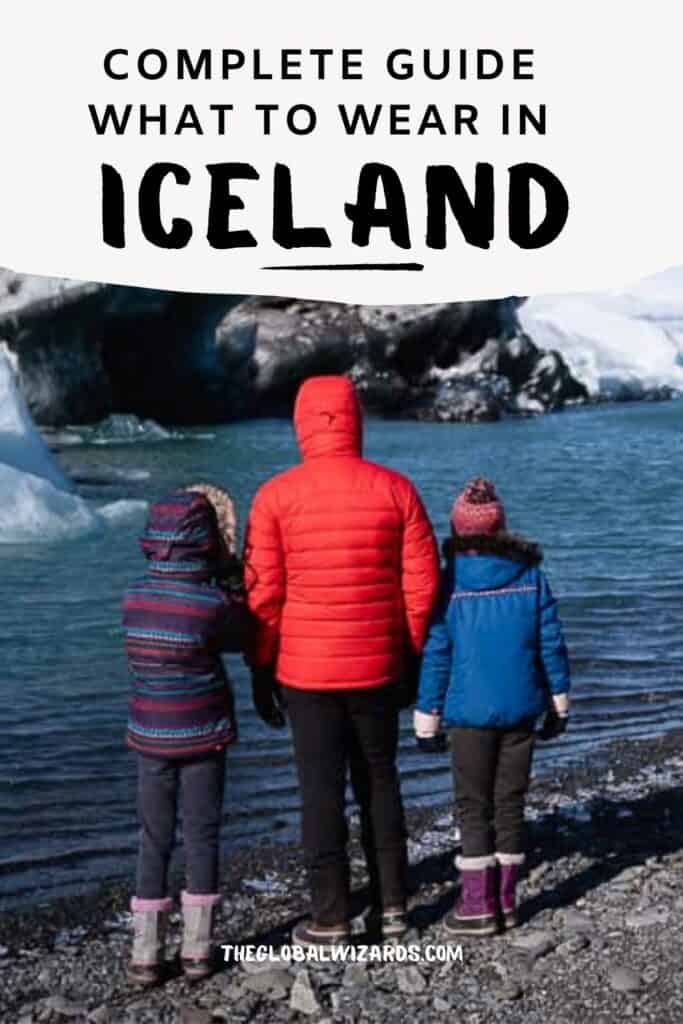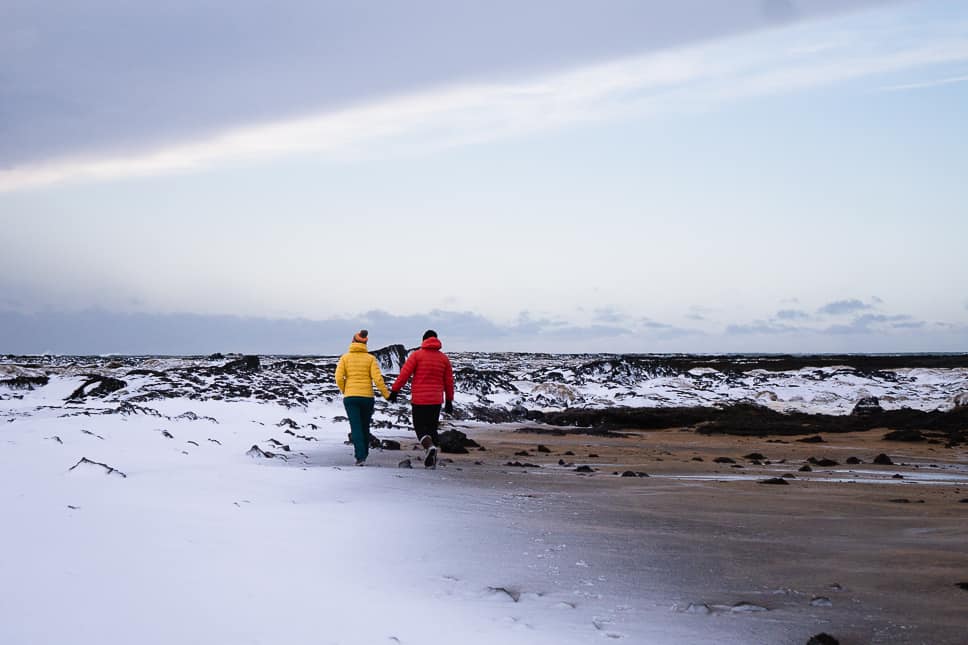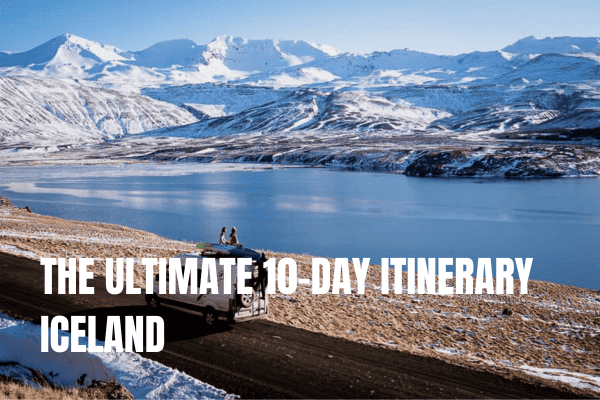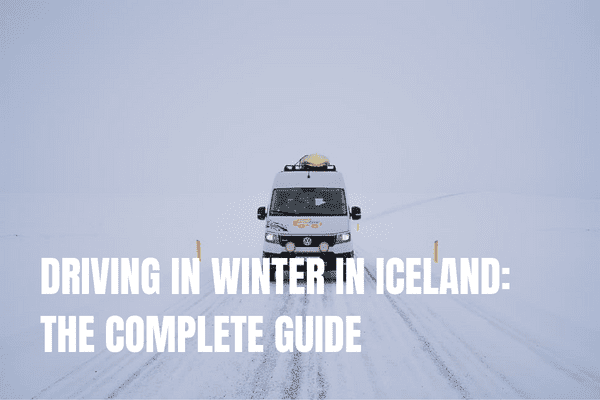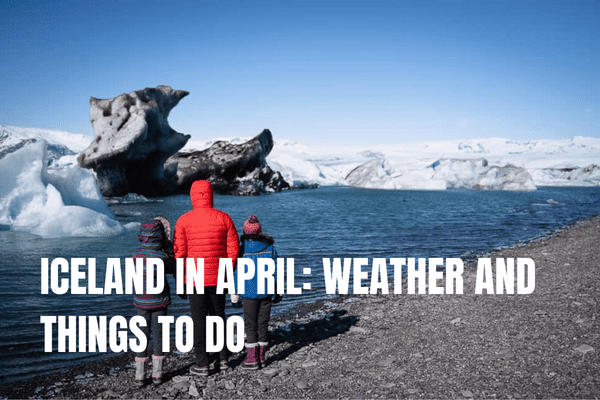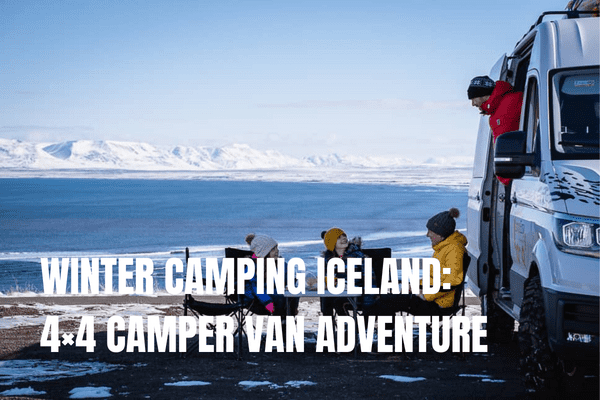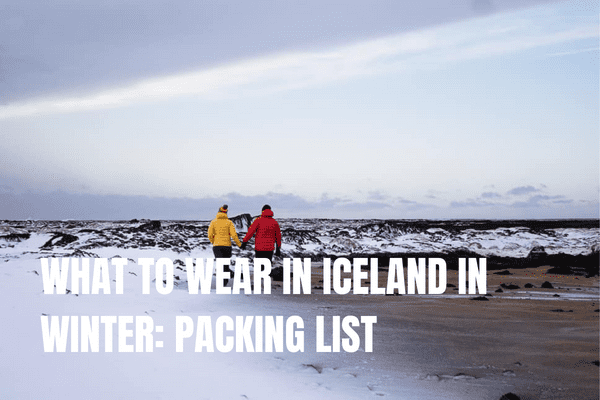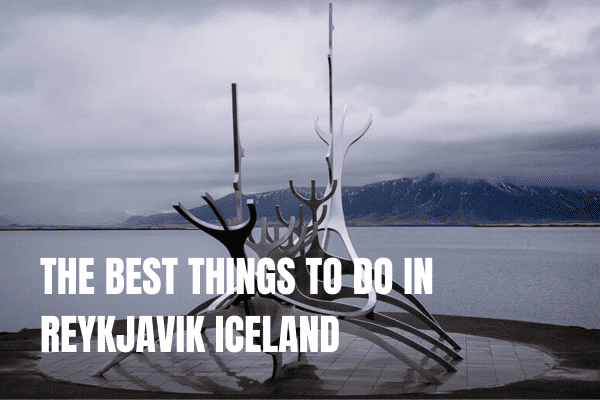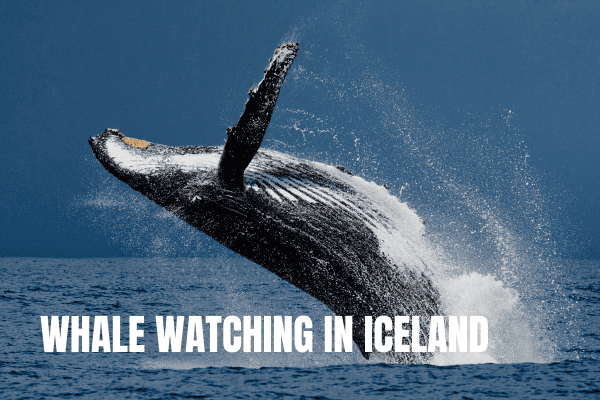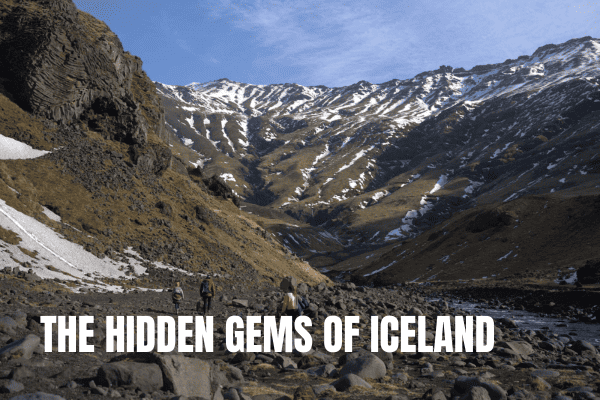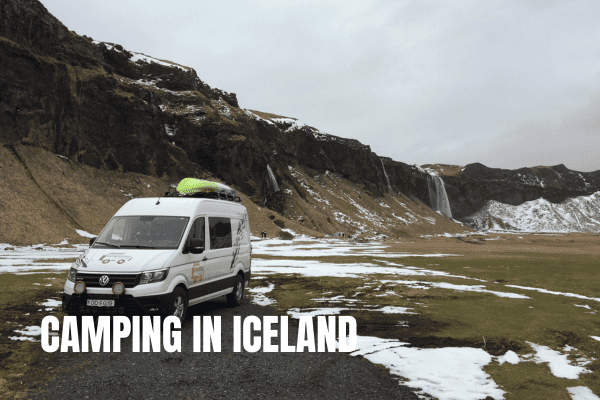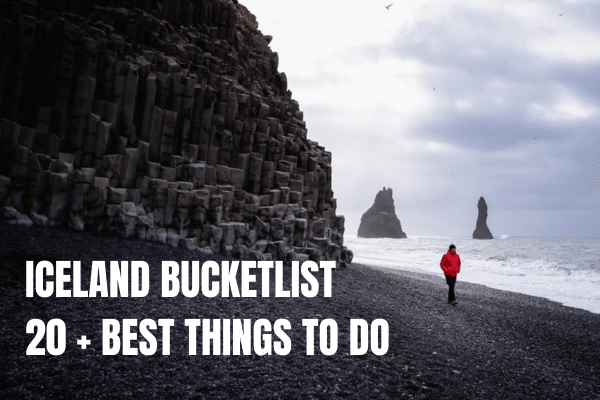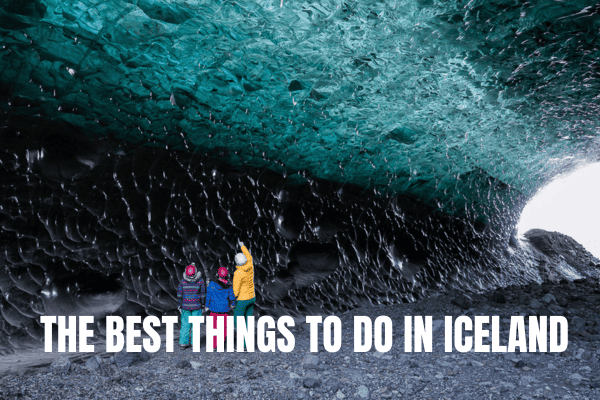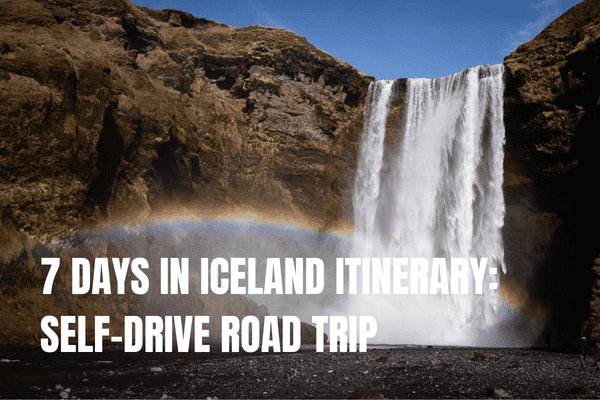Complete Iceland winter packing list on what to wear in Iceland in October – April
You’ve decided to go to Iceland in winter! Great choice! Wondering what to wear in Iceland in October? Do you think it will be different from what to wear in Iceland in February? In this guide, we’ll give you all the information you need to prepare what to pack for Iceland in winter.
First of all, winter in Iceland is long. Planning a trip to Iceland and don’t know what to wear in October, November, December, January, February, March, or April? Then this article is for you.
We traveled to Iceland in April, which is still wintertime, and had to put some serious thoughts into our winter packing list for Iceland. It can make or break your vacation, especially since you’ll be outside most of your trip.
If you only have one week to spend in Iceland, we’ve created the ultimate 7-day itinerary for Iceland for you. It’s perfect for summer and winter trips to Iceland. If you have more time check our ultimate 10-day itinerary for Iceland.
Icelandic weather can be highly unpredictable, with four seasons in one day. You really need to be prepared for anything! But you don’t have endless space in your luggage. So what to pack for Iceland in winter?
In this complete guide, we’ll give you all the tips and tricks for what to bring to Iceland when planning an Iceland road trip in winter. From the best boots for Iceland in winter to the best Iceland winter coats, we’ll cover it all! Based on our own experience, you’ll be prepared for any weather or outdoor activity without being cold.
Read until the end of this post, where you can download our printable packing list for Iceland.
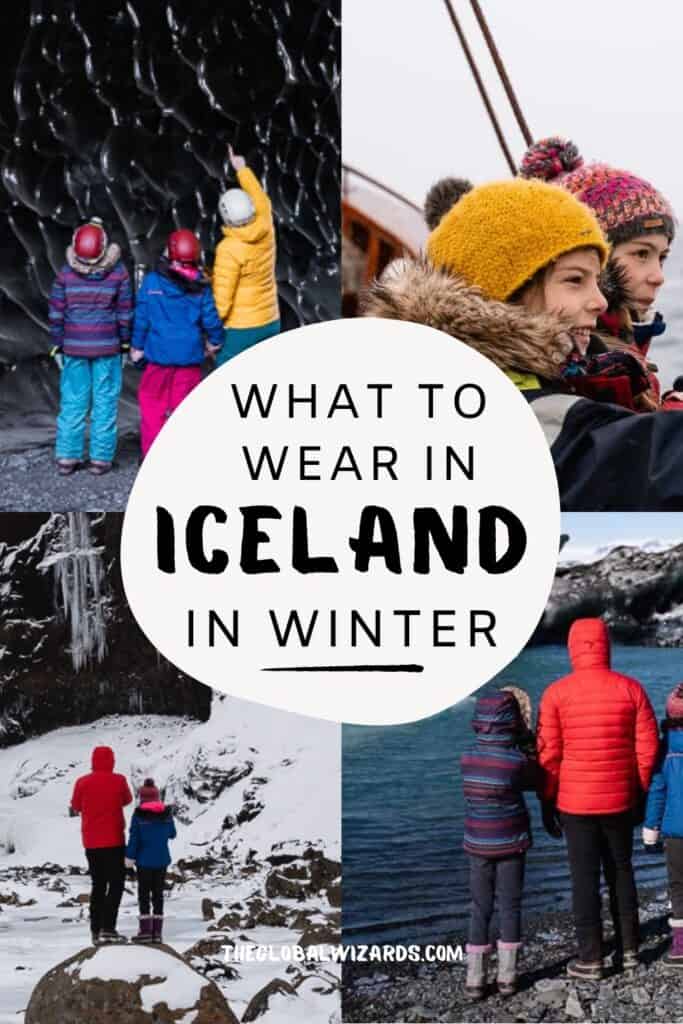
This post may contain affiliate links. If you make a purchase through one of these links, we may receive a commission at no extra cost to you. Please read our affiliate disclosure and privacy policy for more information.
Advice on what to wear in Iceland in winter
How cold is Iceland in winter?
Before deciding on what to wear to Iceland in winter, we need to take a closer look at Icelandic weather during the winter months (October – April).
Surprisingly, it’s normally not extremely cold. In wintertime, the temperature often hovers around 0°C (32°F). At least, that’s what they told us. When we were there, it got as cold as -13°C (8°F).
The weather in Iceland is very unpredictable. One moment you’re enjoying some nice sunny winter weather, the next moment it’s raining or snowing. Always check the latest forecasts and weather updates.
It is possible that you still have some storms in October and roads will be closed because of the wind.
However, the real tricky part about the weather in Iceland in winter is the wind. Even though we had temperatures of -25°C (-13°F) in Norway, we felt way colder in Iceland. Even when it’s 0°C (32°F), the ice-cold blast makes it feel like you’re freezing! The wind chill is never to be underestimated.
Read more: Driving in Iceland in winter: a complete guide
So you’re better prepared for anything! The harsh wind, snow, or freezing rain will ruin your trip if you’re not wearing the proper clothing for Iceland. Think of numb fingers and painfully frozen feet, … Never underrate the weather! Dress as warm as you can!
We’re giving you all the tips you need to have a great (warm) holiday! Read on for our winter Iceland essentials.
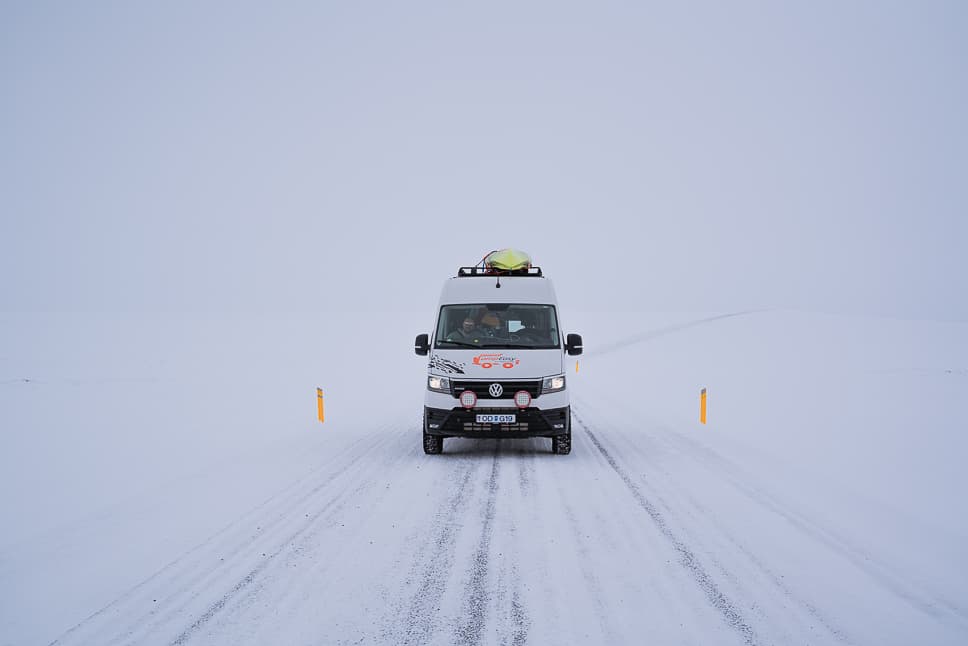
Essential tips for your winter packing list for Iceland
Are you wondering what to pack for Iceland in October or February? Winter in Iceland is from late September or the start of October until the end of April. So what to wear in Iceland in winter doesn’t really depend on the month you’re traveling in.
Whether you’re packing for Iceland in November, January, or March, you’ll need to follow a few basic principles!
First of all, you need to think layers, layers, layers!! Layering is the key principle for outdoor activities in all kinds of weather. If you pack layers, you’ll save lots of space and will be able to dress for all weather conditions.
The three-layer method works as follows: a base layer close to your body, a mid-layer for insulation, and an outer layer to protect you from water and wind. Your body heat is trapped between the layers, keeping you warm. Check the video below for an explanation of the layering system.
Waterproof/windproof clothing is essential for your Iceland packing list. If wind or water finds its way through your clothing, you’ll be cold and miserable! Don’t make the mistake of leaving for Iceland just with sneakers or jeans during wintertime.
When you’re considering how to dress for Iceland, you should always invest in high-quality gear. If you’re cold, you won’t be able to enjoy the beauty Iceland has to offer!
In such extreme conditions, high-quality fabrics and brands are key to keeping you warm and dry during your Icelandic trip. Merino wool, for example, should always be included in your packing list for Iceland.
Which specific clothes for Iceland in winter should be included in your suitcase? We’ll work our way up from the base layer to the outer layer and end with some other essentials for your Iceland packing list.
What to wear in Iceland in winter
Thermal underwear – Baselayer
For your base layer, you’ll want thermal leggings and a thermal top. We highly recommend Merino wool for all your thermal base layers (and socks). This type of fabric will keep you the warmest. It’s a must for your Iceland winter clothing.
Furthermore, merino wool doesn’t sting, is breathable, and stays odor-free for a long time. You can wear it over and over again before you need to wash it. Just let it breathe by the end of the day. The downside is the price. It can be rather expensive. But you won’t regret it!
Two brands we love are Icebreaker and Meriwool.
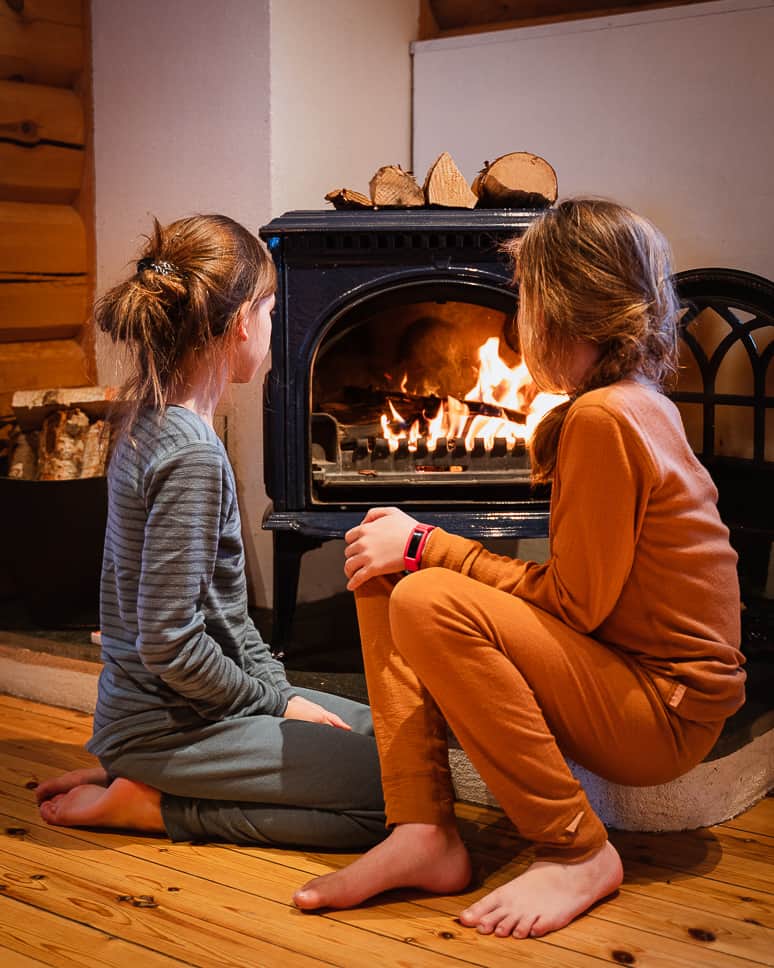
Wool or fleece sweater – Mid layer
Between your thermal base layer and waterproof/windproof outer layer, you’ll need a mid-layer. Again, we strongly recommend choosing wool!
A fleece sweater works fine, but you’ll soon notice that nothing beats wool when it comes to warmth. You could take fleece mid-layers as a second set or for warmer days, but try to pack at least one wool sweater.
If you’re in Iceland, you’ll see all the locals walk around in their traditional Icelandic wool sweaters. They’re called Lopapeysa and are very recognizable by the typical patterns. The popular Icelandic brand Icewear has some of the best! If you have one of these in your suitcase, you won’t get cold!
We both have a wool sweater by Fjällräven. Absolutely in love with it! It’ll be the warmest piece you own! We’re wearing ours during our van life trips on colder summer evenings as well. But a Lopapeysa is on the list!

Waterproof trousers or hiking pants
When visiting Iceland in winter, don’t try to explore with only regular jeans or leggings. You can go out in them on a dry day. But they won’t be suitable for all outdoor activities during your trip.
You can pack them for warm evenings in your hotel or camper. People dress very casually in Iceland, even for nights out. So don’t worry about it too much.
It will rain or snow. You’ll be cold and terrible the rest of the day. Waterproof trousers are essential when packing for Iceland!
You could go for waterproof hiking pants lined with fleece which will give a lot of warmth. We wore these above our thermal wool underwear and were never cold. Or maybe the waterproof ski pants that are already in your closet.
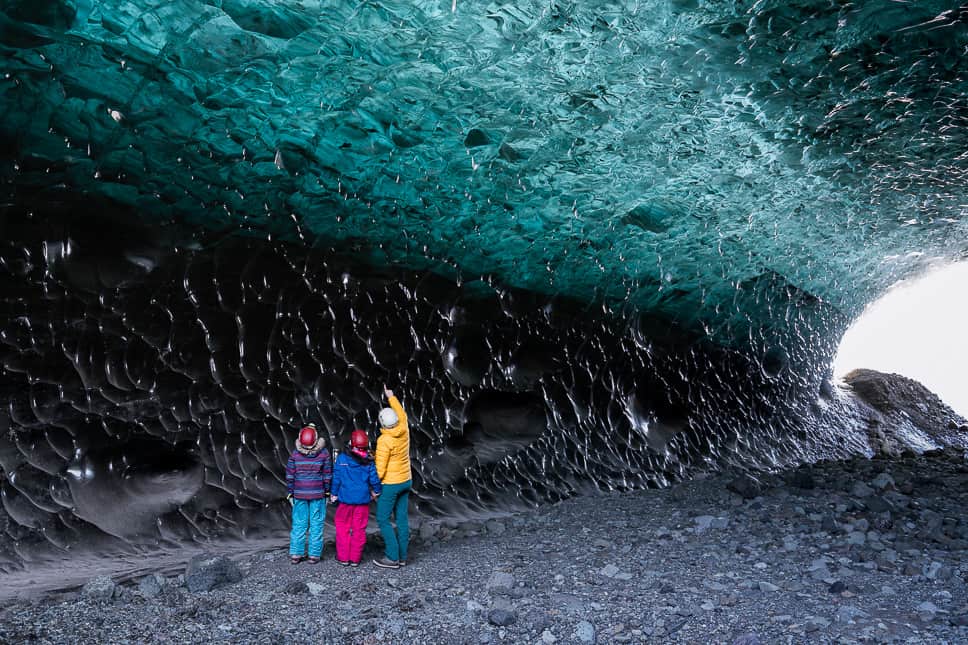
Some people prefer lighter waterproof hiking pants. We think these are great in summer, but find them too thin for Iceland’s winter clothes.
Wool socks
One of the things to bring to Iceland is high-quality wool socks!! Together with waterproof Iceland winter boots, they are key to protecting your feet from the fierce wind! Your feet will freeze without proper socks and boots.
Therefore, if you’re considering what to wear in Iceland in winter, don’t save on some pairs of wool socks. Yes, again, we prefer wool! It really is what will keep you the warmest and most comfortable.
Warm ski socks will do the trick as well. Look for the highest percentage of wool, preferably merino wool.
Wind- and waterproof jacket
If you’re wondering what clothes to wear in Iceland for winter, I think you get the theme by now. They need to be warm and protect you from the harsh weather. This is why a high-quality waterproof and windproof jacket can’t miss on your packing list for Iceland.
Opinions can differ on the best coat for Iceland’s winter. There actually are a few different options. Always buy one with a hood though, you can use an extra layer when the weather is extreme.
First of all, you could go for a heavy Iceland winter jacket that will keep you warm and dry. Or even the somewhat longer version, the water- and windproof parka, like this arctic parka by The North Face.
If you visit Iceland in winter, a second option is to buy a high-quality down jacket combined with a wind-and-waterproof shell jacket.
This is what we chose, as it gives you more layers and possibilities. The down jacket (often not waterproof) can be worn as a regular jacket when the weather is dry or as a warm layer under a shell jacket when it’s raining or snowing.
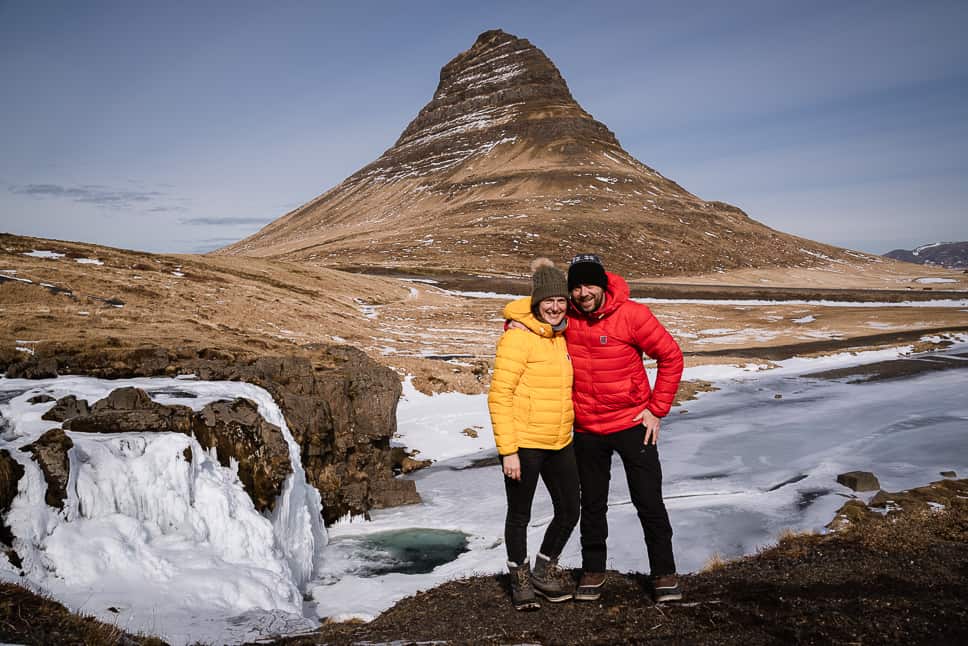
If you decide to buy a down jacket, please make sure to look for a responsible down. We chose the Expedition down jacket by Fjällräven and absolutely love it. It’s very lightweight and compact to pack and has great insulation features! It kept us warm during a very cold Icelandic winter!
The last option is to take your regular ski jacket. Combined with warm underlayers such as thermal shirts and a woolen sweater, they should keep you warm enough and withstand the weather.
Do you need waterproof winter boots for Iceland?
You’ll want to invest in high-quality waterproof warm boots for traveling to Iceland in winter. Icelandic temperatures combined with the wind make it very cold. Frozen feet are painful. Don’t let them ruin your trip.
We wear Sorel winter boots and couldn’t be more enthusiastic about them, especially the Caribou or Carnival line! They are waterproof which makes them perfect for snow and rain. A lot of them have a washable wool liner that will keep your feet extra warm. If you visit Iceland in the coldest months, usually November, December, January, February, and March, you’ll need a pair of these waterproof snow boots.
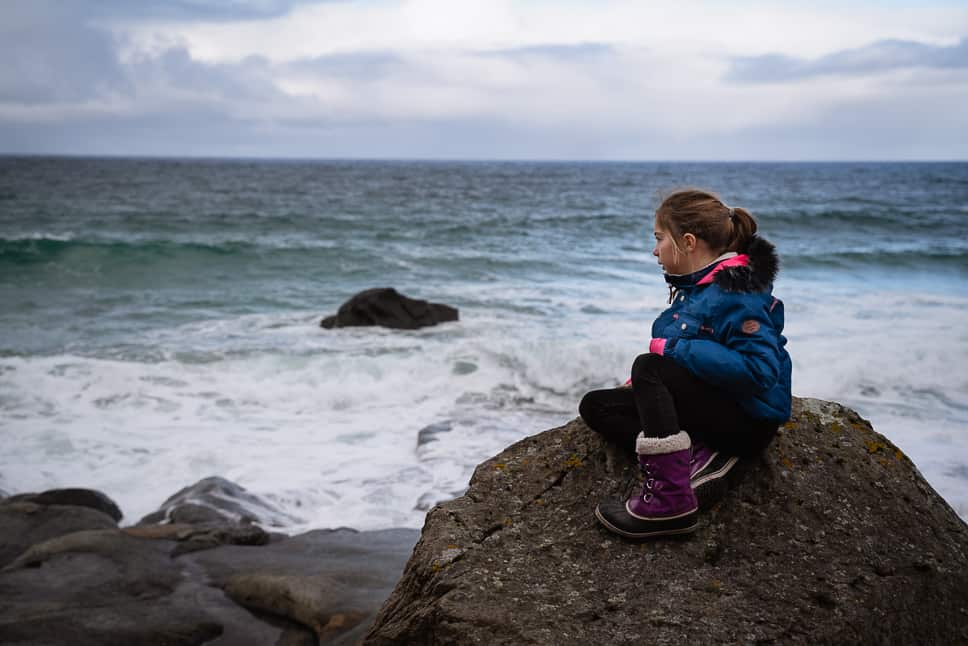
Besides snow boots, you could also bring some waterproof hiking shoes. They won’t keep your feet as warm. With the right socks, however, they are more comfortable for long, challenging hikes.
Last but not least, if you visit Iceland from October to April, you should consider crampons. Many paths are very icy, which makes them dangerous to walk on. Some of them are even impassable without crampons. When we visited in March, we didn’t have any. We would never leave again without them. So glad we didn’t injure ourselves.
Waterproof gloves and tech liner
Even when it’s not freezing, your fingers get numb because of the strong winds in Iceland! Don’t take this lightly. You’ll need to protect your hands from the cold! Being very sensitive to this, I invested in two different pairs of gloves.
First of all, water- and windproof gloves are (again) essential for Icelandic winter. As soon as your hands get wet, you’re lost. People living up north wear mittens, as they are even better to keep your hands warm.
Secondly, I bought high-quality tech liners with touchscreen fingertips. As I take pictures all the time, I needed gloves that could stay on while I was handling my camera or smartphone. Wear them under your waterproof gloves for extra warmth. Yes, layers, layers, layers.
Warm beanie and scarf
When you’re considering what to wear to Iceland in winter, don’t forget a windproof beanie and scarf.
We lose a lot of body heat through our heads, so you can’t leave for Iceland without a proper beanie. People in Iceland wear a hat almost all year round.
We prefer a knitted hat with fleece lining. It’s both warm, windproof, and stylish. If you have to choose, however, always pick warmth over fashion! Another great possibility is winter hats with ear flaps.
When we travel, we always bring along our buff. It’s very multifunctional, and compact, and works great as a windproof scarf. For Iceland winter packing, however, we really recommend taking a fleece neck warmer as well.
Extra pair of shoes
You might want to bring an extra pair of shoes for your Iceland winter trip. Either some casual hiking shoes or a pair of sneakers will be useful in the evening if you go to a restaurant in your hotel.
Don’t worry about them too much, however. People in Iceland are used to wearing waterproof boots all the time.
For your thermal pool visits or if you are camping, you could consider bringing some flip-flops.
Swimming clothes
If you’re wondering what to wear to Iceland in winter, swimwear is probably not the first thing you think of. But trust me, you’ll want to add them to your Iceland packing list for winter.
Iceland is known for its hot springs and warm pools. Always put a swimsuit in your backpack when you go out for a walk. You never know when you’ll encounter a hot pool.
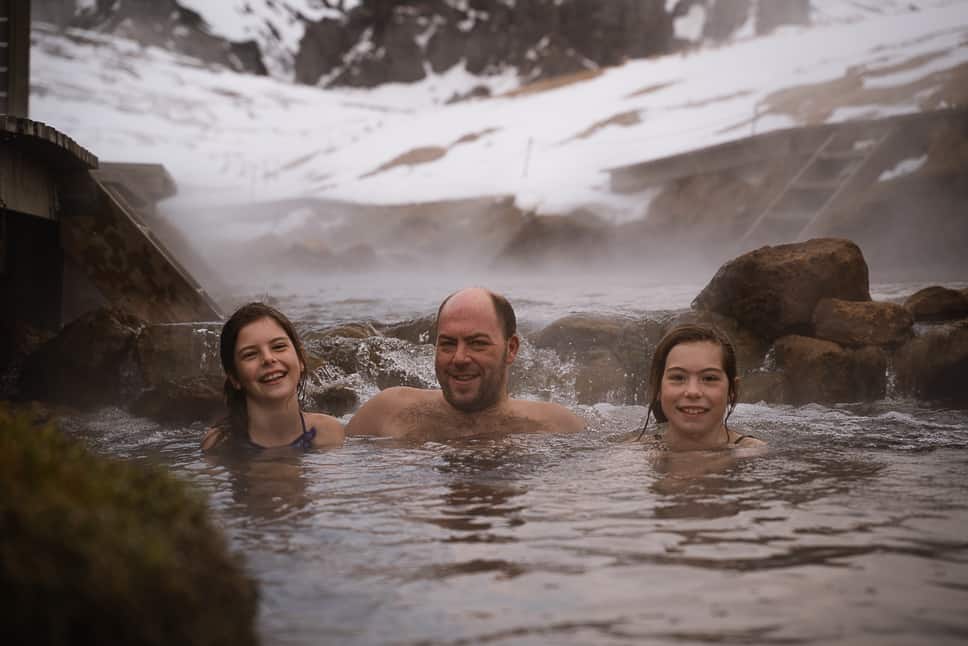
Other essentials to pack for Iceland in winter
Travel towel
A lot of people don’t pack towels anymore if they stay in a hotel or Airbnb. As we mentioned before, however, Iceland is known for its thermal pools. So you’ll want to bring your swimming clothes and a fast dry travel towel. If you have to rent them there, it will be expensive. Plus, they are very compact and dry in no time.
If you’re traveling in a campervan through Iceland, like we were, bring a couple of these travel towels. You don’t want to dry yourself after a well-deserved shower with a towel that smells like the thermal baths.
Backpack – waterproof covers
Visiting Iceland means you’ll be hiking a lot. As we are with four, we usually take two backpacks with us.
First of all, our photography backpack by Lowpro, carries all of our photography gear. It even has room for some extras such as water, and snacks, …
Secondly, we bring either our Fjällräven Kanken backpack or our Deuter daypack. It carries our swimwear and towels, some snacks and water bottles, sunscreen, …
Don’t forget to bring a waterproof cover for your backpack, if it doesn’t already have one. When it rains in Iceland, it rains!
External power bank
If you visit Iceland during winter, you’ll soon notice that batteries die out much quicker. Especially the strong ice-cold wind will speed up the process. Try to keep your smartphone warm by putting it in a warm cover or close to your body.
We strongly advise you to bring extra batteries for your camera or drone. And a fast-charging power bank for your smartphone or other electronic devices.
Universal travel adapter
Iceland uses European plugs, so don’t forget to bring a travel plug adapter if you travel to Iceland. We use this universal travel adapter, which also has USB ports.
Don’t forget to check if your electronic device works on the 220v – 240v system, as is used in Iceland. No worries if you’re coming from Europe, but if you’re on the US 110v power system, you better check the label.
Re-usable water bottle
Always bring a reusable water bottle when you travel. It is better for our planet, but you’ll also save a lot of money if you don’t have to pay for bottled water.
Water from the tap is drinkable in Iceland. You can refill your bottle almost anywhere. Furthermore, if you’re out in nature, fill your bottle in one of the rivers. Iceland has some of the clearest water!
We can highly recommend a Dopper water bottle, which has also a little drinking cup.
Thermos water bottle
As we were camping in Iceland in winter, we also brought our thermos water bottle to Iceland. But it turned out to be handy during many of our hikes as well. Especially the kids loved to drink some hot chocolate after hiking through the cold.
We prefer the brand’s Thermos and Thermoflask.
Moisturizer
It gets cold in Iceland, especially due to the icy wind. This means your skin will get dry and your lips will crack. Especially if you are sensitive to this, don’t forget to bring some lip balm, body lotion, and hand cream.
We brought some cream, especially for cold weather. The Weleda protection cream is our favorite.
Packing cubes
We absolutely love our packing cubes! They make our lives so much easier! We have a different color for every member of our family.
Packing cubes enable you to pack your clothing much more efficiently and compactly. If you need something, you don’t need to empty your whole suitcase.
Sunglasses and sunscreen
When you pack for Iceland in October or April, the sun can be quite high in the sky. Sunscreen (eco-friendly) and sunglasses will be necessary then to protect you from UV radiation.
Even if you’re traveling to Iceland in November, December, January, February, or March and wonder what to pack, don’t forget your sunglasses! There are only a few hours of daylight, which means the sun stays really low and will shine in your eyes.
Photography gear
Iceland is absolutely breathtaking, so you better bring along a good camera! Check our complete guide to travel photography gear for a full overview of the essential camera gear for Iceland.
We love our Sony A7Riii and have a multifunctional 28 – 75 Tamron lens with it. For Iceland, you better bring a great landscape lens as well. If you want to photograph waterfalls in long exposure, you’ll need an ND filter.
Bring enough memory cards. You can’t take enough pictures in Iceland! Choose quality memory cards above the cheaper ones. It will affect the quality of your photos as well.
Don’t forget to bring a decent, lightweight tripod! Lightweight, because you travel. But make sure it’s stable enough to withstand the fierce wind. You’ll need it for photographing the northern lights. And we use it to take our family pictures as well.
See our post on how to make the best family travel pictures if you’d like to know more about the subject.
If you’re planning to snorkel, dive, or do very active outdoor activities, bring a GoPro with you. And last but not least, Iceland is an amazing country to use a drone. It gives you another perspective on nature’s beauty!
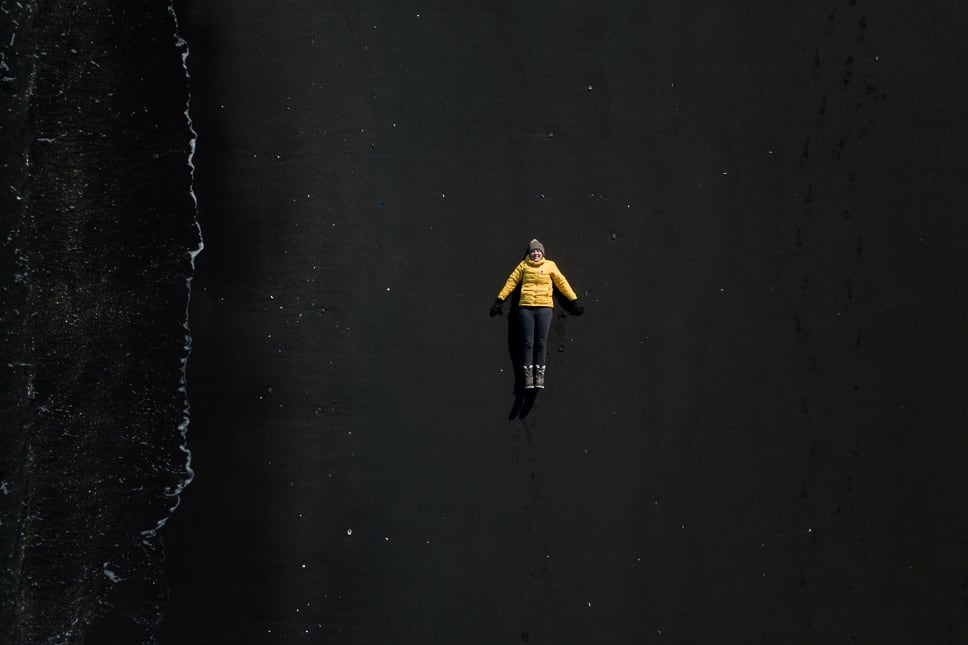
Car chargers
If you’re living the van life, as we do, you know a car charger is one of the essentials for campervan life.
But even when you’re not camping, don’t forget a USB car charger for your smartphone. We even have a car charger for our drone and camera batteries.
The time you’re driving from one place to the other is perfect for loading all of your batteries, especially since they die so quickly because of the cold.
Hand/toe warmers
If you’re like me, and easily get frozen fingers or toes, you could bring some hand warmers or feet warmers with you.
For my hands, I particularly like our rechargeable hand warmer. It also serves as a power bank which has proved to be very handy!
Flashlight
Don’t forget to pack a compact flashlight or headlight for your Icelandic winter trip.
Winters in Iceland are dark, with very few daylight hours during the months of November – February. This means you’ll find yourself in the dark more often than you’d imagine. Good light is essential!
We used our lights a lot while camping when photographing in the dark and for hiking to the volcano.
First-aid and medication
Standard in our suitcases is a first-aid kit and some basic medication. Especially for Iceland, you might want to bring those too. The country is remote. As soon as you leave the populated areas, there is not much around.
Don’t worry if you forget, however. You can find all the basic things in Reykjavik.
How do Icelanders dress in winter?
Icelanders typically dress warmly in winter, as the weather can be quite cold. They often wear layers of clothing, including thermal underwear, wool sweaters, and waterproof outerwear. Additionally, hats, scarves, and gloves are essential to protect against the cold and wind. Many Icelanders also wear sturdy, waterproof boots to navigate the snowy and icy conditions. Overall, the key is to dress in warm, weather-resistant clothing to stay comfortable and safe during the winter months in Iceland.
What to wear in Reykjavik in winter
Here are 10 essential items to pack for a winter trip to Reykjavik
Iceland’s capital city of Reykjavik may be picturesque and charming, but its winters are no joke. With temperatures regularly dipping below freezing and frequent snow and wind, you’ll want to come fully prepared to brave the Icelandic winter weather. Here are 10 essential items to pack for Reykjavik in winter so you can stay warm and enjoy your trip without freezing:
Warm winter coat – Down or synthetic insulation is best to lock in body heat. Look for a water and wind-resistant exterior to shield you from the elements.
Warm hat – Choose a hat that covers your ears to prevent heat loss. Wool or fleece are great insulating materials.
Insulated gloves – Mittens are warmer than gloves so consider packing a pair. Bring extras in case a pair gets wet.
Warm scarf – A thick wool or fleece scarf protects your face and neck from the biting wind.
Thermal underlayers – Long underwear, tops, and bottoms made from merino wool or fleece wick moisture and insulate your core.
Sweaters and fleece – Bring layers you can add or remove as needed to regulate your temperature throughout the day.
Snow pants – Do I need snow pants in Iceland in winter? Yes, look for insulated, waterproof pants that will keep your legs dry and toasty.
Thick socks – Pack several pairs of warm wool or thermal socks to change into dry ones as needed.
Winter boots – Go for boots that are waterproof, insulated, and have good traction on icy surfaces.
Sunglasses – Even on overcast days, the light snow reflects off surfaces. Protect your eyes with UV-blocking shades.
With these essential winter weather items packed, you’ll be fully equipped to enjoy everything Reykjavik has to offer without freezing your icicles off! This is our list with all the gear you need when going to Iceland.
Iceland packing list winter
Because we don’t want you to forget anything if you leave for Iceland, we’ve created a downloadable and printable Iceland winter packing list for you! This detailed checklist contains all the necessary items for a successful winter trip to Iceland!
If you are wondering what to wear in Iceland in winter, this list has you covered. Besides everything mentioned in this article, you’ll find a few extra things you don’t want to forget.
Download our packing list for Iceland winter (October – April) and you’re all ready for your next trip!
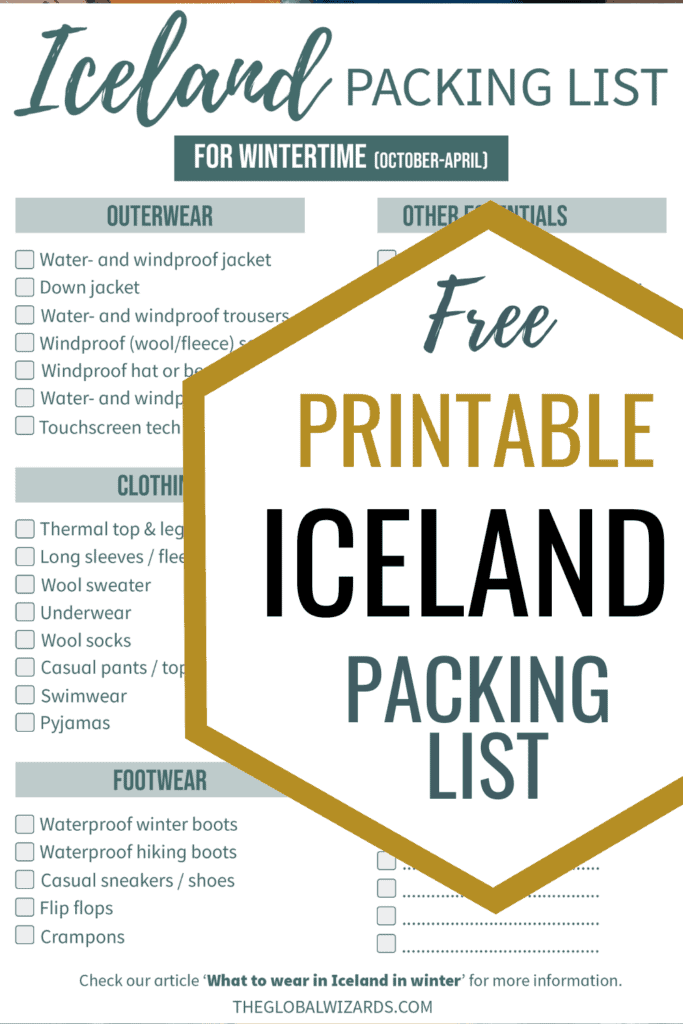
Related articles for your Iceland winter trip
Share on Pinterest and save this Iceland winter packing list for later
